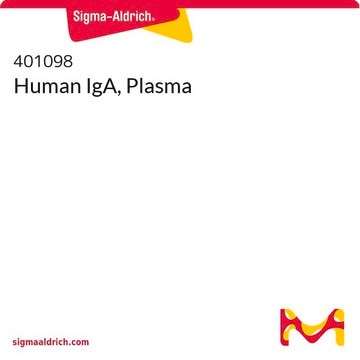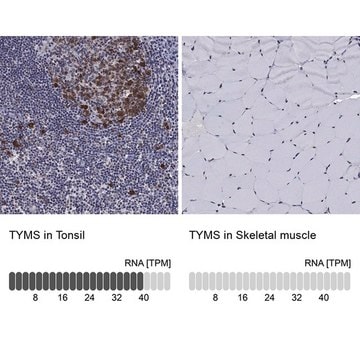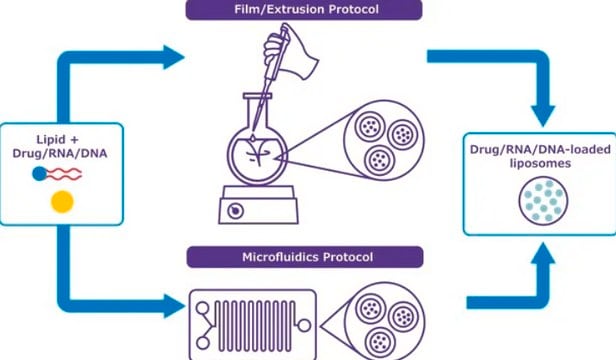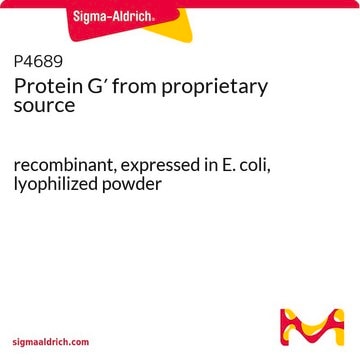MAB4130
Anti-Thymidylate Synthase Antibody, clone TS106
clone TS106, Chemicon®, from mouse
Sinónimos:
Thymidylate synthase
About This Item
Productos recomendados
origen biológico
mouse
Nivel de calidad
forma del anticuerpo
purified immunoglobulin
clon
TS106, monoclonal
reactividad de especies
human, mouse
reactividad de especies (predicha por homología)
rat
fabricante / nombre comercial
Chemicon®
técnicas
ELISA: suitable
flow cytometry: suitable
immunofluorescence: suitable
immunohistochemistry (formalin-fixed, paraffin-embedded sections): suitable
immunoprecipitation (IP): suitable
western blot: suitable
isotipo
IgG1
Nº de acceso NCBI
Nº de acceso UniProt
Condiciones de envío
wet ice
modificación del objetivo postraduccional
unmodified
Descripción general
Especificidad
Inmunógeno
Aplicación
A previous lot of this antibody was used in ELISA.
Flow Cytometry:
A previous lot of this antibody was used in FC.
Immunofluorescence:
A previous lot of this antibody was used in IF.
Immunoprecipitation:
A 10 μL/mg concentration of a previous lot was used on protein lysate.
Immunohistochemistry (Frozen and Paraffin sections):
1:50 - 1:100 (with incubation for 30-60 minutes at room temperature). TS106 can benefit from antigen retrieval with either EDTA pH 8.0 or 10mM citrate buffer pH 6.0 .
Western Blotting:
1:200 - 1:400. Recognizes a 36KDa band.
Optimal working dilutions must be determined by end user.
Epigenetics & Nuclear Function
Cell Cycle, DNA Replication & Repair
Calidad
Western Blot Analysis:
1:500 dilution of this antibody detected THYMIDYLATE SYNTHASE on 10 μg of MCF7 lysates.
Descripción de destino
Forma física
Almacenamiento y estabilidad
Nota de análisis
Positive Control: 5-FU-resistant colon carcinoma cell lines (NCI H630R10, NCI630R1), 5-FU-resistant breast cancer cell lines, MCF-Ad5 and MCF-Ad10
Otras notas
Información legal
Cláusula de descargo de responsabilidad
Código de clase de almacenamiento
10 - Combustible liquids
Clase de riesgo para el agua (WGK)
WGK 2
Punto de inflamabilidad (°F)
Not applicable
Punto de inflamabilidad (°C)
Not applicable
Certificados de análisis (COA)
Busque Certificados de análisis (COA) introduciendo el número de lote del producto. Los números de lote se encuentran en la etiqueta del producto después de las palabras «Lot» o «Batch»
¿Ya tiene este producto?
Encuentre la documentación para los productos que ha comprado recientemente en la Biblioteca de documentos.
Nuestro equipo de científicos tiene experiencia en todas las áreas de investigación: Ciencias de la vida, Ciencia de los materiales, Síntesis química, Cromatografía, Analítica y muchas otras.
Póngase en contacto con el Servicio técnico








